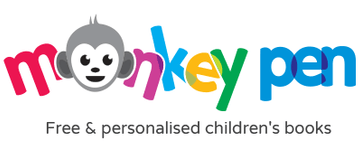The Future of Coloring: Digital Integration and Traditional Art Balance
Nov 14, 2025
Coloring has long been a part of childhood. From holding a brand-new crayon, to watching paper transform into something magical, coloring provides children an enjoyable outlet to express their creativity and express themselves creatively. But in today's world, technology is influencing almost everything- including how children create art. This change raises a question: What will shading in the near future be like? How do we create an equilibrium between modern digital techniques and the traditional methods that we have come to know and love?
The article will discuss the future of digital coloring, as well as the importance of traditional coloring and the art of technology balance that educators and families can adopt. We also explore the future trends in shading, which will impact the way that children discover, create, and design.
Why Digital Coloring Is Growing
Digital coloring has become increasingly popular as computers, tablets, and smartphones become regular features of daily life. A lot of parents use digital coloring apps due to their convenience, ease of use, cleanliness, and accessibility. Teachers also love digital tools for fast resources for their lessons or assignments.
Kids love digital coloring because it provides them with new opportunities to experiment with their imagination. With just a click of the finger, they are able to play with different textures, shades, and effects. They feel compelled to play because mistakes can be reversed immediately. This gives them confidence and lets them experiment with ideas without fear.
The rapid growth of digital platforms means that children can shade wherever they want, in cars, the waiting room, and even at home, without the need for boxes of materials. This increasing convenience indicates that digital coloring will play an essential role in the future of coloring.
The Continuing Value of Traditional Coloring
Even with the latest digital tools, traditional coloring has its importance in the development of children. The act of holding a pencil or crayon helps develop fine motor skills and builds the muscles in the hands needed to write. Coloring on paper helps children learn how to manage pressure, movement, and direction. This is something that electronic devices simply cannot compare to.
Traditional coloring is also an energizing, peaceful experience. The smooth texture of the paper, as well as the soothing sounds of crayon and the slow motion of filling spaces, make for a relaxing atmosphere. Children are able to relax and feel comfortable.
There's also something special about the process of completing a physical page. The colored drawings are a great thing to display on a refrigerator, the wall of a classroom, or a scrapbook. This can create a bond with the viewer and a feel of accomplishment.
The traditional method of shading has lasted for generations because it encourages creativity in a straightforward, natural manner. In spite of the advancements in technology, it's evident that traditional tools will remain effective.
Understanding Technology-Art Balance
Finding the perfect balance between traditional and digital art is not about deciding the right side. It's about harmony. A healthy balance between technology and art allows digital tools to improve the color experience while enjoying the benefits of traditional techniques.
A child, for instance, could begin coloring digitally to experiment with ideas and play with various combinations. Then, they can transfer their ideas onto paper and take pleasure in the slow, thoughtful process of coloring with physical crayons.
Coloring techniques that are traditional and digital can help one another. The one encourages exploration while the other develops core skills. Together, both help children grow into confident, imaginative thinkers.
Future Coloring Trends
The future of coloring is filled with thrilling possibilities. Here are a few future color trends that are getting more well-known:
1. Interactive Coloring Books
Many books now come with QR codes that allow online versions of pages. Coloring is fun for children, both with paper and using a screen.
2. Augmented Reality (AR) Coloring
AR technology allows pages that are shaded to "come to life" via an application. A character that is shaded by a child could appear on the screen or move in 3D. Coloring can be more fun, but it still relies on traditional tools.
3. Printable Digital Downloads
As families increasingly seek an option that is flexible, PDFs downloaded from the internet are becoming the norm. They offer the ease of access to digital files with the fun of hands-on traditional coloring.
4. Eco-Friendly Coloring Options
As sustainability is becoming more prominent, growing awareness of sustainability, more parents are recycling paper for printing and using refillable colored materials.
5. Customised Coloring Pages
Thanks to digital technology, children can now access pages that are personalized with their names or favourite characters, which can help build a sense of community.
These trends suggest that the future will not be about replacing one approach with another, but rather enhancing the ways that children can experience creativity.
How Monkey Pen Fits into the Future of Coloring
At Monkey Pen, we believe that coloring should remain fun, accessible, and enthralling. We continue to offer an extensive selection of printable coloring pages and PDFs to families across the globe, and we are also looking into new digital ways to help the growing interest.
Our primary goal is to offer relevant, kid-friendly illustrations that stimulate imagination. Through the combination of traditional designs with modern digital tools, Monkey Pen stands at the crossroads of creativity and innovation. We are awestruck by the conventional feeling of crayons on paper, while enjoying the thrill of digital tools.
This is how we stay committed to our customers' needs as we are getting ready to move into the digital coloring of the future.
Encouraging a Balanced Approach at Home and School
Teachers and parents can ensure that children enjoy the best of both worlds by providing an enjoyable and balanced coloring experience. Here are a few simple suggestions:
- Make time for colored pencils each week.
- Let digital coloring sessions be done in smaller bursts to prevent screen fatigue.
- Utilize digital coloring to plan your work using a tool. Finish the art on paper.
- Make sure art materials are within easy reach to stimulate imagination.
- Enjoy both physical and digital creations equally.
This balance encourages creativity, learning, and emotional development.
Color for the Future!
Coloring will always have an essential role in the lives of children, regardless of how rapidly technology is evolving. The future is in blending the traditional and modern while preserving the past of paper and crayons, and also exploring the tremendous potential of digital technology. By balancing their lives, kids will benefit from both worlds of creativity without limits and the chance to build skills that can last the rest of their lives.
At Monkey Pen, we're pleased to provide free, printable coloring pages that embody these thoughts. You'll find coloring pages that have been designed to aid in the development of skills in focus, concentration, and overall well-being. Explore our selection of free coloring pages and printable coloring books, and start coloring instantly. The website also offers various educational resources, including educational posters, children's books, and dot-to-dot printables. All are available in free PDF format at absolutely no cost.
We are looking forward to providing families with a bright future where imagination shines brightly on every page, be it printed or displayed on paper.


